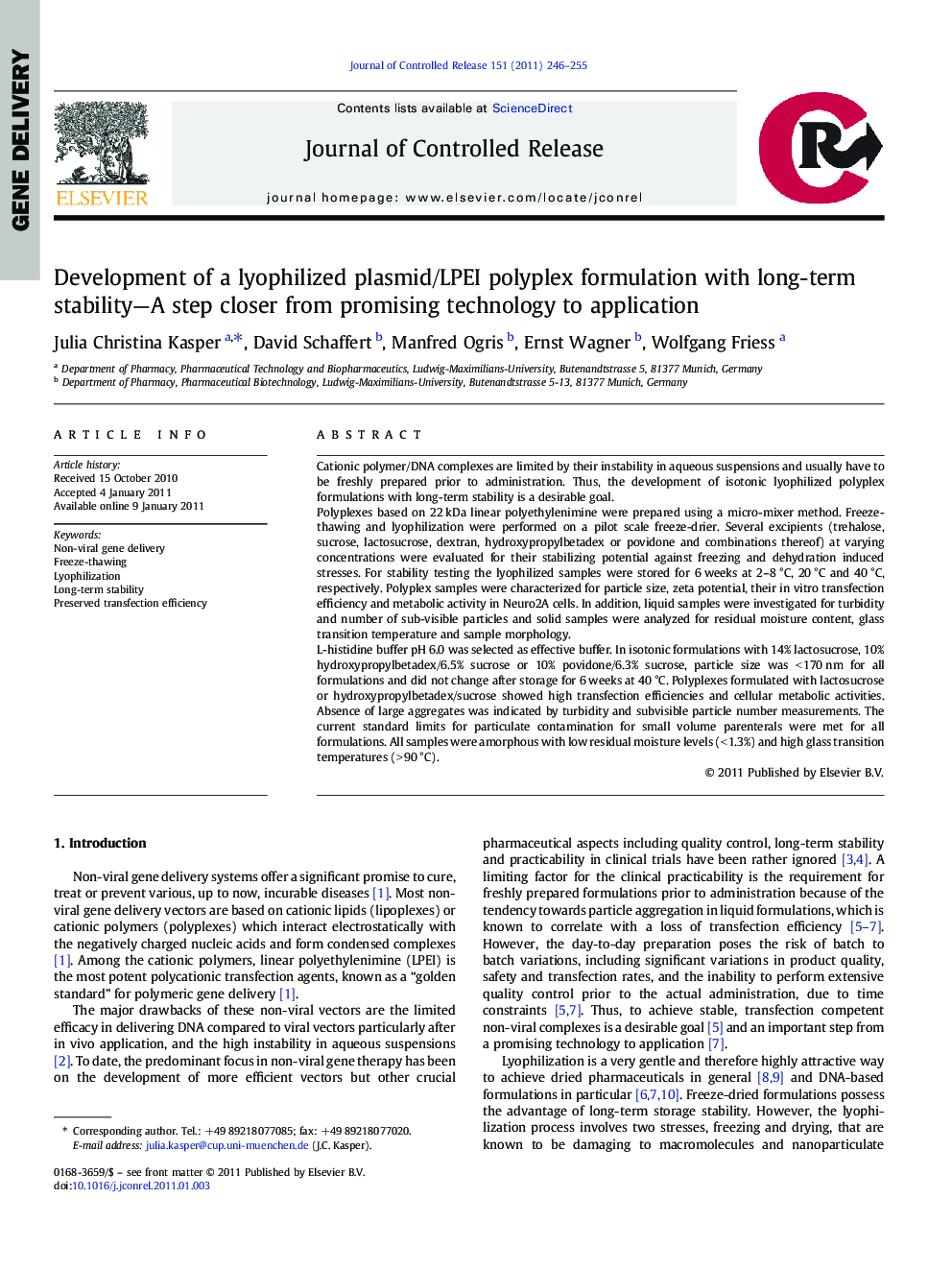| کد مقاله | کد نشریه | سال انتشار | مقاله انگلیسی | نسخه تمام متن |
|---|---|---|---|---|
| 1425237 | 986757 | 2011 | 10 صفحه PDF | دانلود رایگان |

Cationic polymer/DNA complexes are limited by their instability in aqueous suspensions and usually have to be freshly prepared prior to administration. Thus, the development of isotonic lyophilized polyplex formulations with long-term stability is a desirable goal.Polyplexes based on 22 kDa linear polyethylenimine were prepared using a micro-mixer method. Freeze-thawing and lyophilization were performed on a pilot scale freeze-drier. Several excipients (trehalose, sucrose, lactosucrose, dextran, hydroxypropylbetadex or povidone and combinations thereof) at varying concentrations were evaluated for their stabilizing potential against freezing and dehydration induced stresses. For stability testing the lyophilized samples were stored for 6 weeks at 2–8 °C, 20 °C and 40 °C, respectively. Polyplex samples were characterized for particle size, zeta potential, their in vitro transfection efficiency and metabolic activity in Neuro2A cells. In addition, liquid samples were investigated for turbidity and number of sub-visible particles and solid samples were analyzed for residual moisture content, glass transition temperature and sample morphology.L-histidine buffer pH 6.0 was selected as effective buffer. In isotonic formulations with 14% lactosucrose, 10% hydroxypropylbetadex/6.5% sucrose or 10% povidone/6.3% sucrose, particle size was < 170 nm for all formulations and did not change after storage for 6 weeks at 40 °C. Polyplexes formulated with lactosucrose or hydroxypropylbetadex/sucrose showed high transfection efficiencies and cellular metabolic activities. Absence of large aggregates was indicated by turbidity and subvisible particle number measurements. The current standard limits for particulate contamination for small volume parenterals were met for all formulations. All samples were amorphous with low residual moisture levels (< 1.3%) and high glass transition temperatures (> 90 °C).
Graphical AbstractFigure optionsDownload as PowerPoint slide
Journal: Journal of Controlled Release - Volume 151, Issue 3, 10 May 2011, Pages 246–255